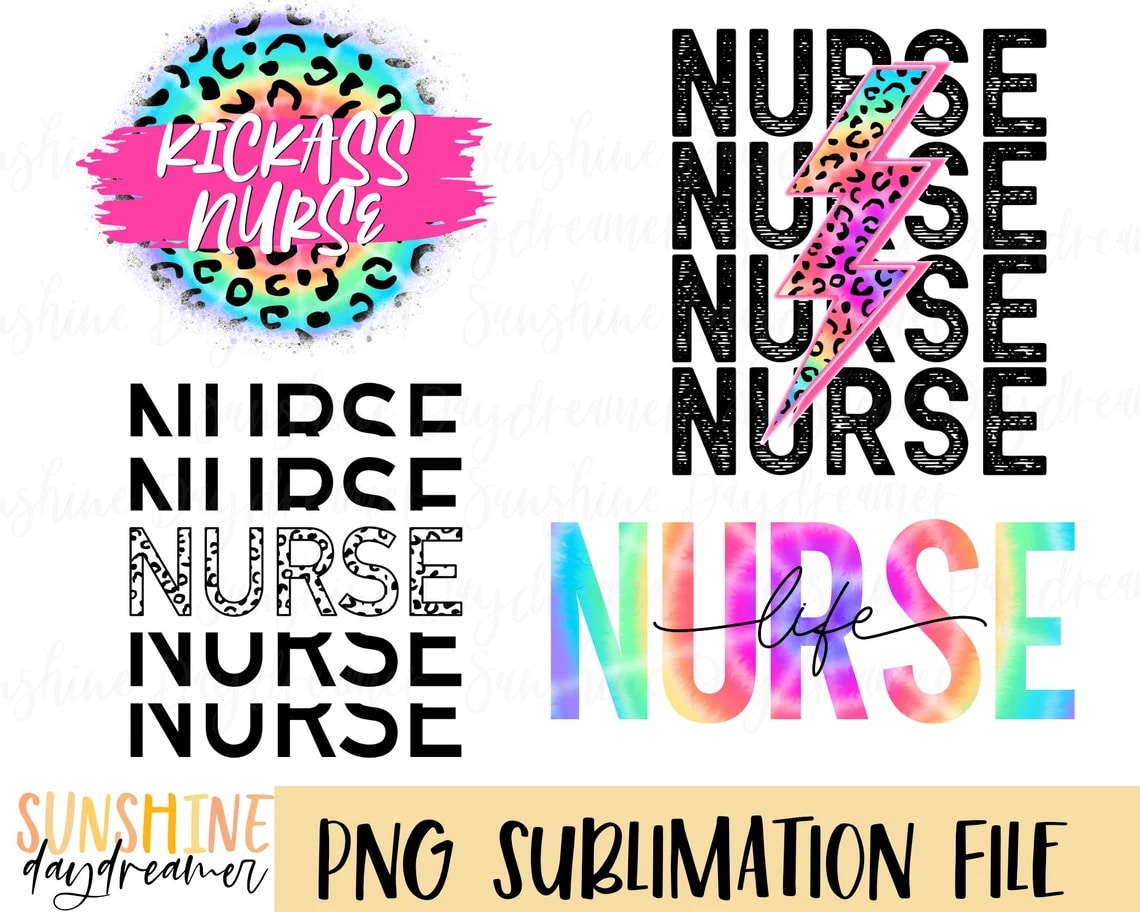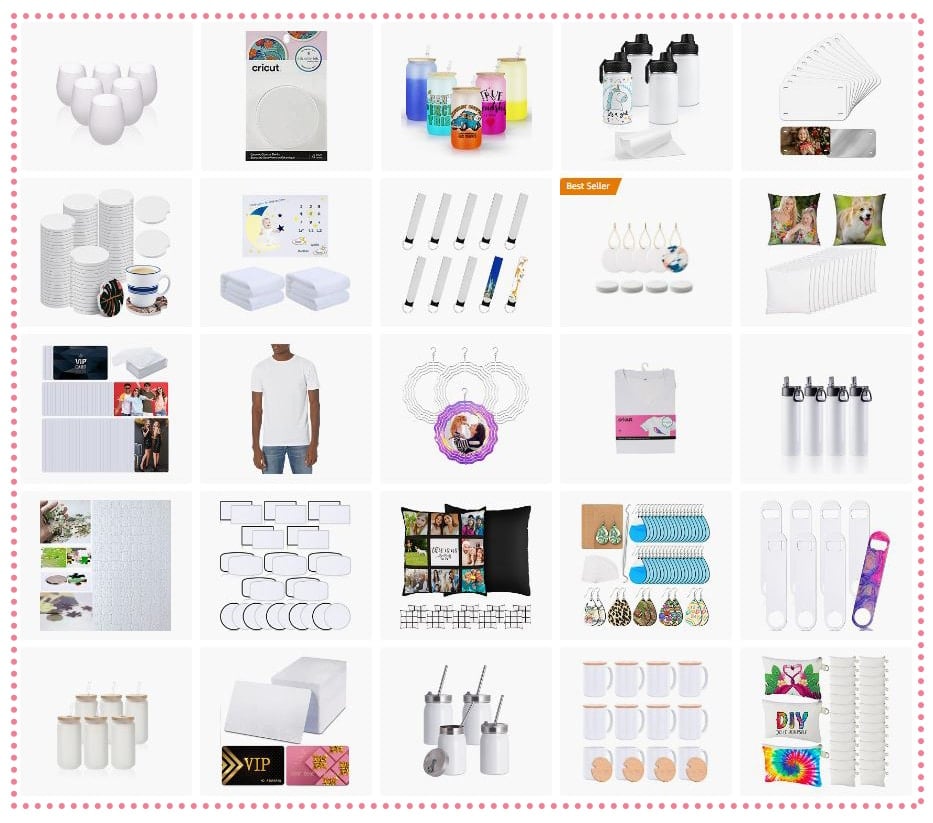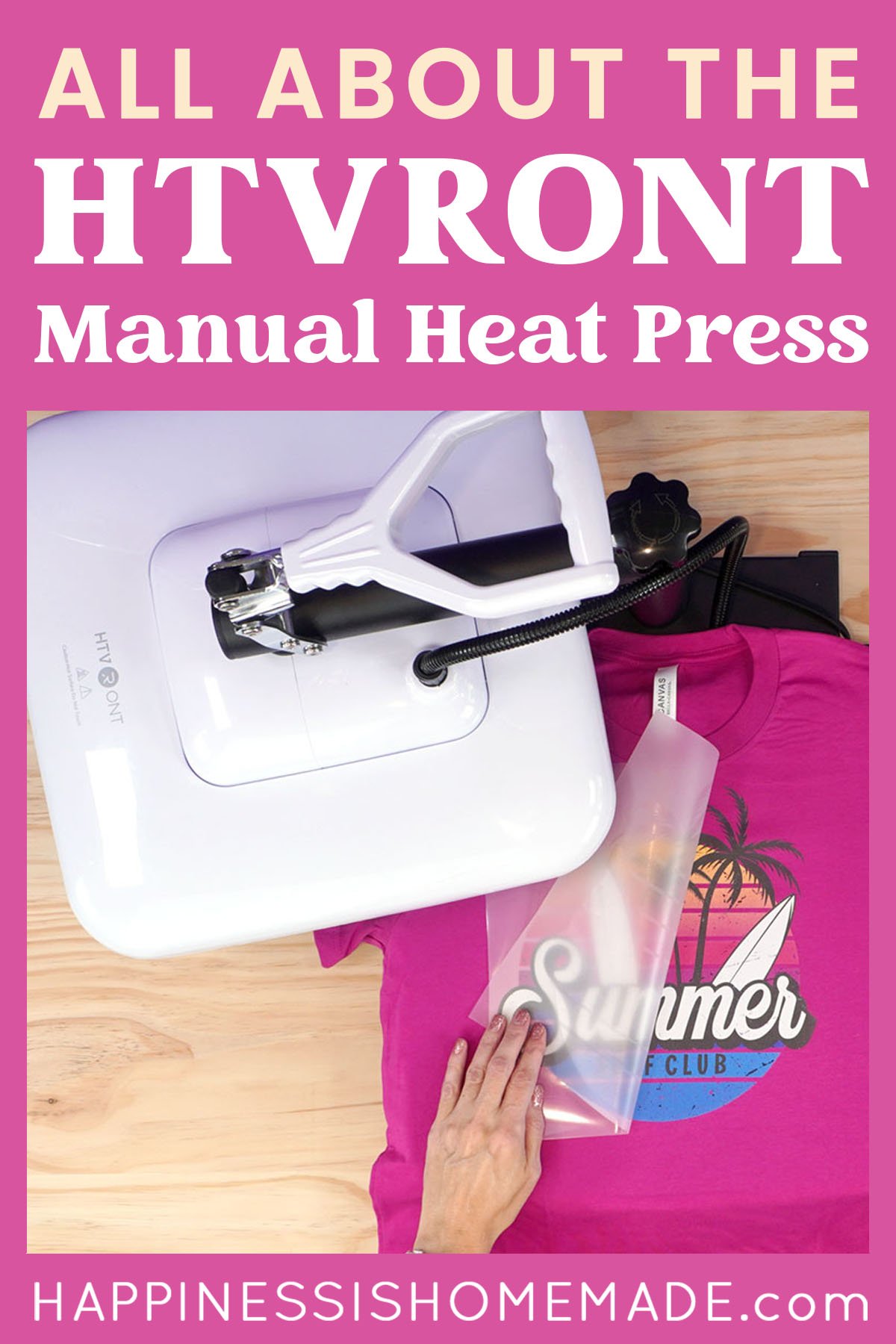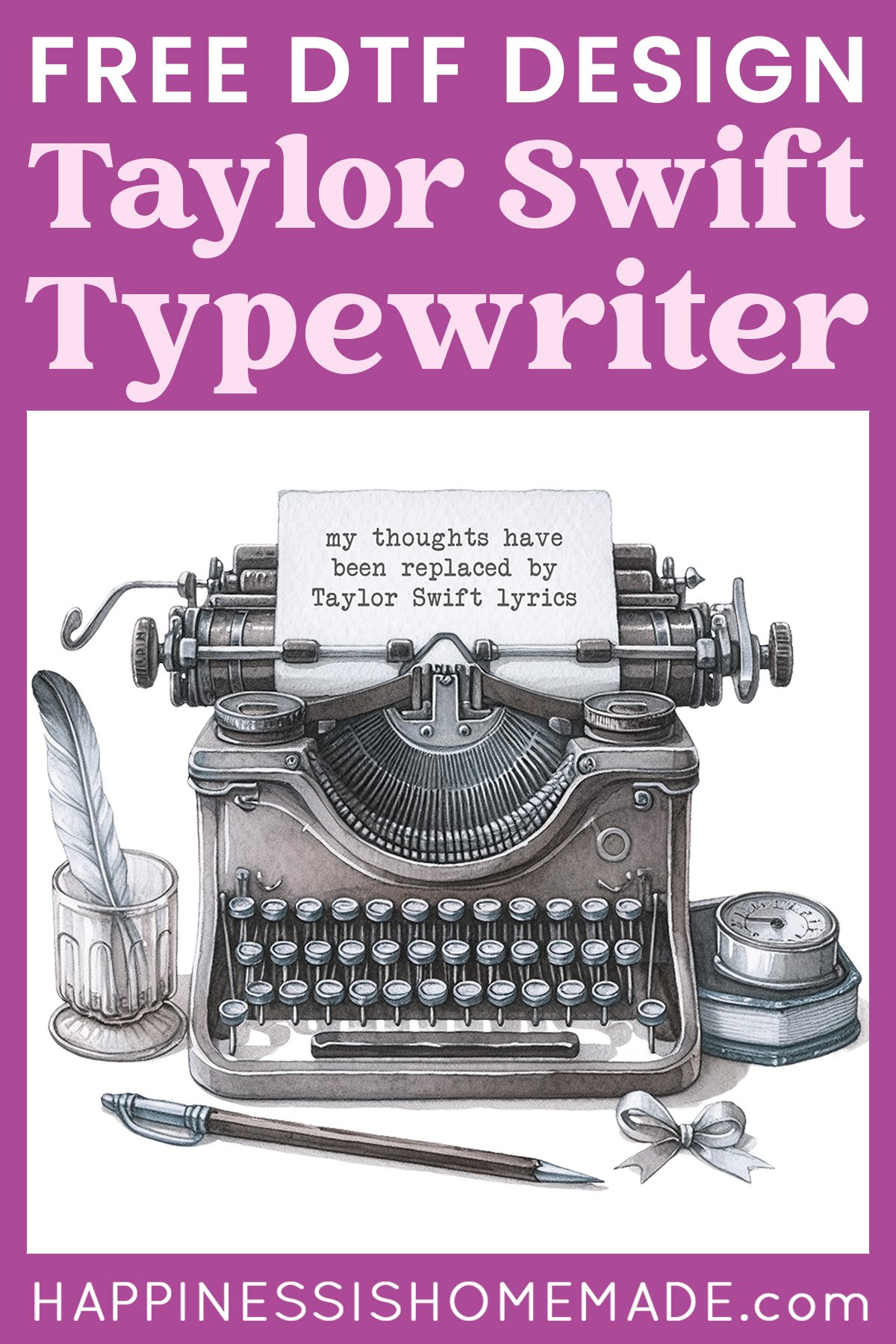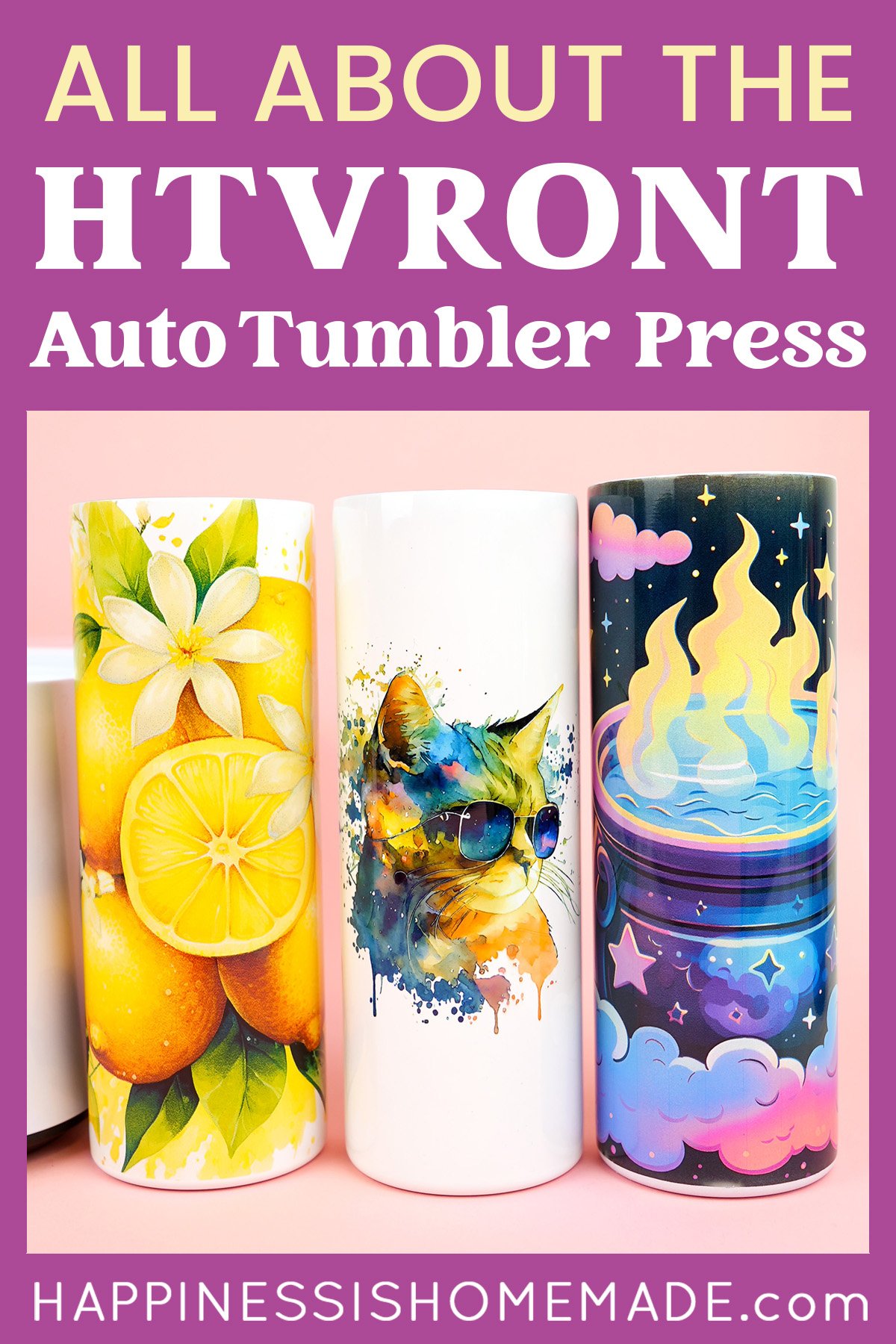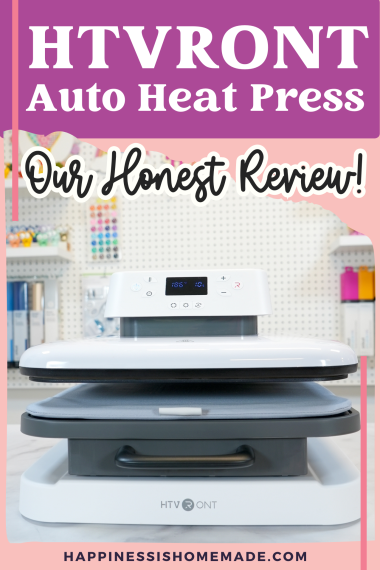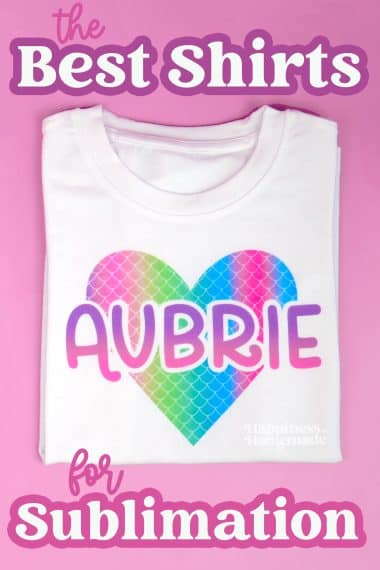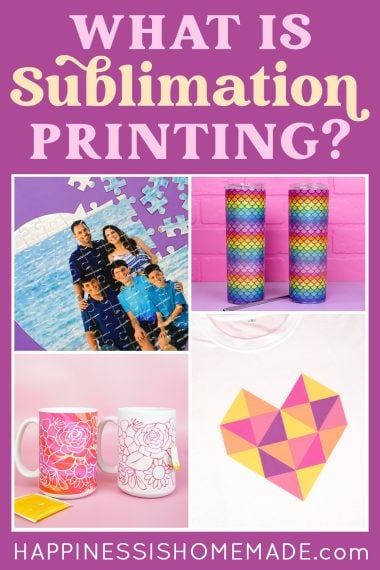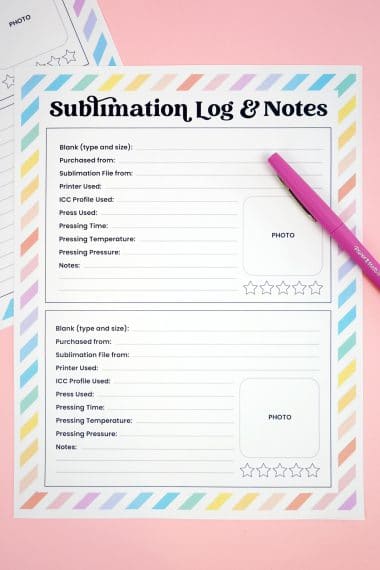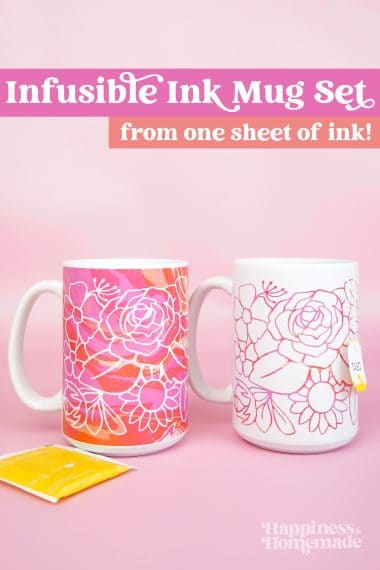“What is Sublimation Printing?” Learn all about sublimation crafting, discover the benefits of sublimation, and determine which supplies you’ll need to get started with sublimation printing!
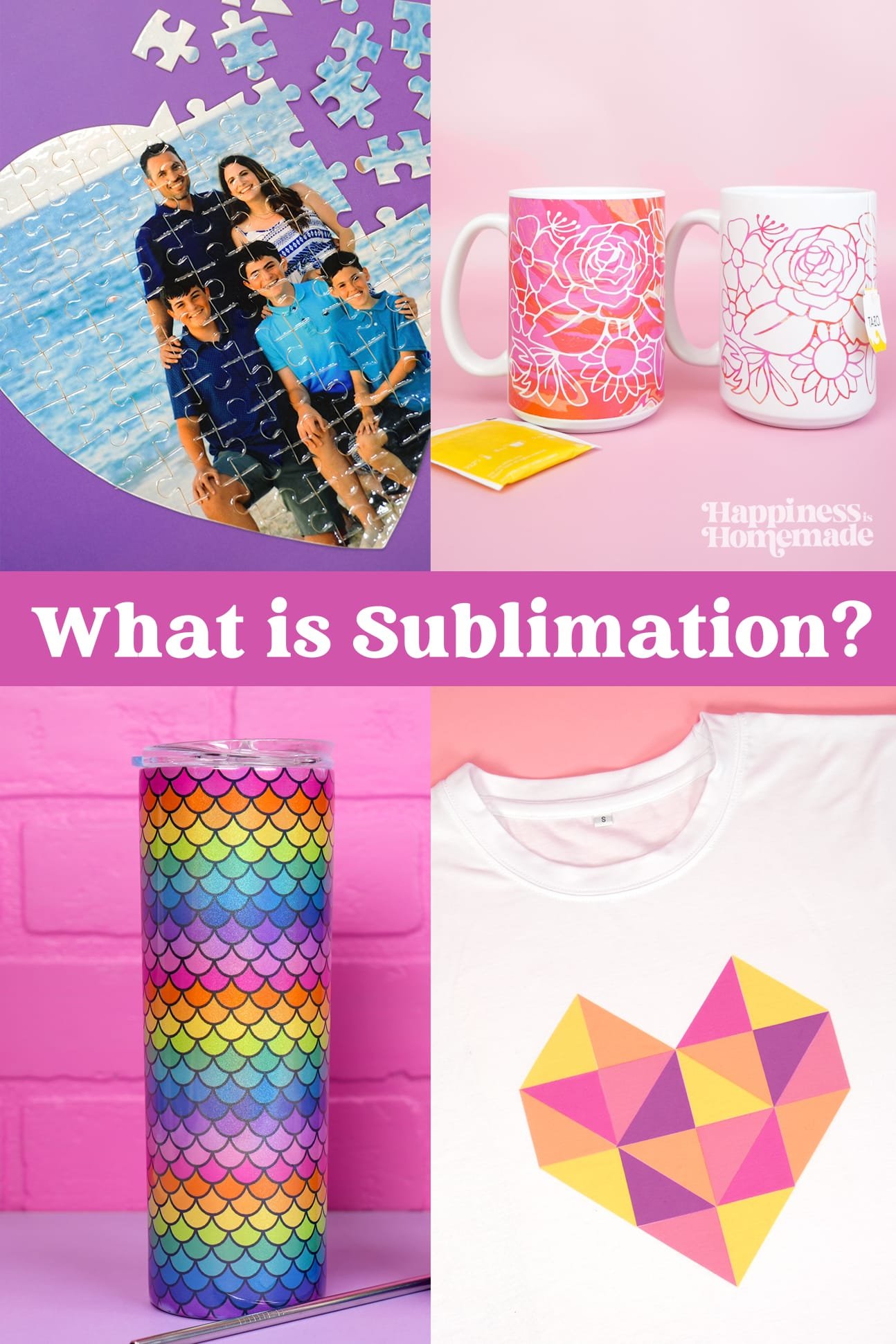
This post may contain affiliate links. I will receive a small commission from these sales at no additional cost to you!
Are you ready to jump into the colorful world of sublimation printing and start creating awesome, personalized crafts like never before? Sublimation printing has taken the crafting world by storm over the past couple of years, and for good reason – it’s a pretty mind-blowing (and easy!) technique! Whether you’re looking to expand your crafting skillset or are just looking to try something fun and new, you’re in the right place!
In this post, we’ll explore the basic fundamentals of sublimation printing and answer the question, “What is sublimation printing?” We’ll also cover the benefits of sublimation, and we’ll share some general information about all of the materials and equipment that you’ll need to get started.
Like many crafts, sublimation printing does come with an initial start-up cost as you will need to purchase special sublimation equipment and supplies. Spread out over time, however, sublimation is actually one of the more inexpensive crafts and hobbies to take up! Plus, sublimation crafts are in high demand right now, so if you’re looking to start a small crafting business, you can likely expect a fairly quick return on your investment!
Learn More About Sublimation Here!
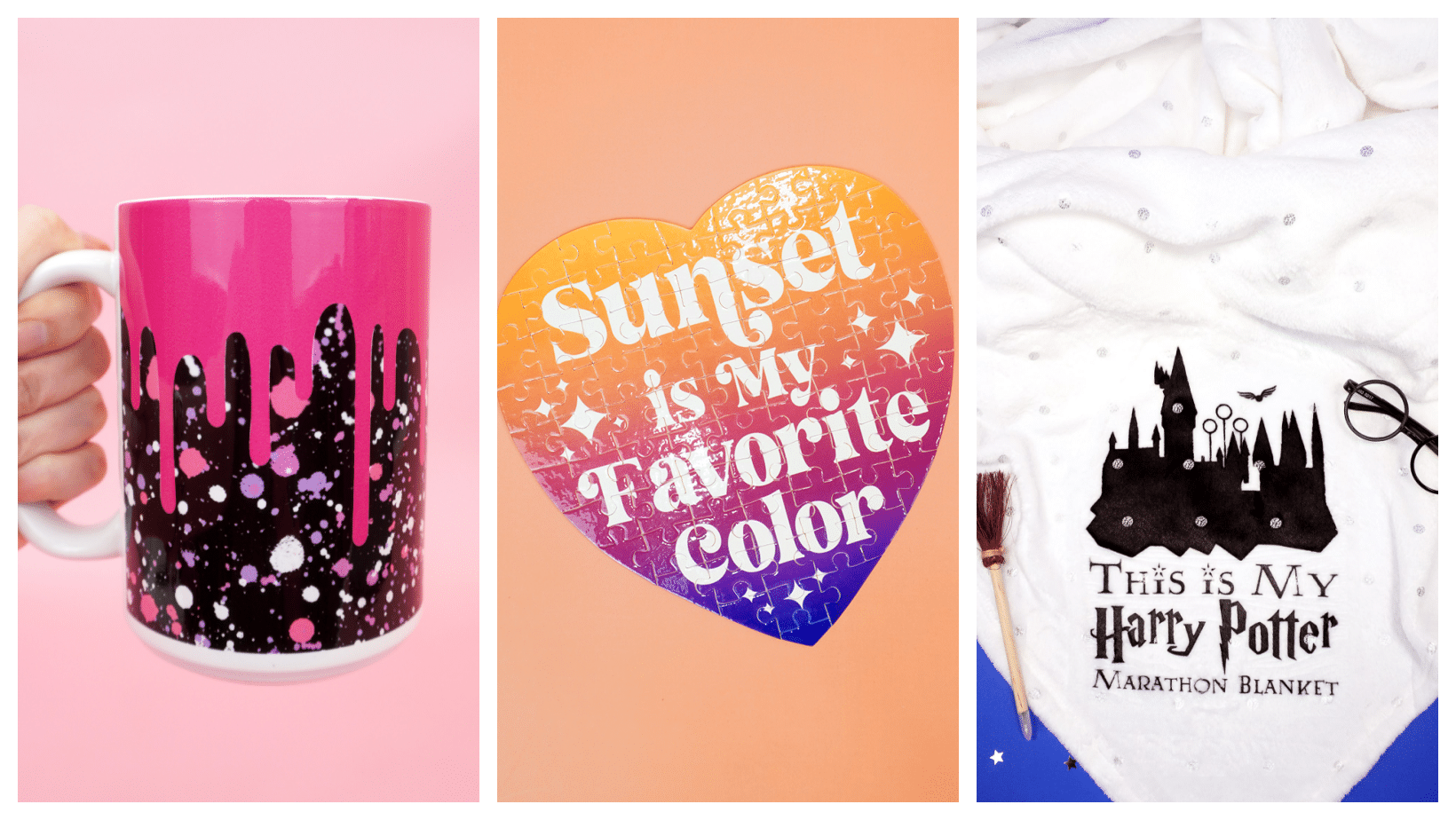
What is Sublimation Printing?
Sublimation printing is a super cool and versatile method of printing that allows you to transfer printed images onto a variety of materials such as fabric, ceramic, metal, and SO much more. The resulting long-lasting prints are vibrant and durable – they won’t ever crack, peel, or fade!
Unlike some of the other traditional printing methods, such as screen printing or inkjet transfers, sublimation doesn’t just simply apply ink to the surface and face of a material. Sublimation printing uses a unique chemical process that actually creates a permanent and durable bond between the ink and the material.
The sublimation ink bonds to the fibers of the shirt, becoming a part of the garment, so it stretches right along with the fabric!
The science behind sublimation is fascinating! The word “sublimation” refers to the process of a solid turning into a gas without passing through a liquid phase. In the case of sublimation printing, the ink is heated until it turns into a gas, skipping the liquid stage, and then it’s pressed into the pores of the substrate (the material you’re printing on) using a heat press machine. Once the high heat and pressure are removed, the ink cools and returns to a solid state, resulting in a vibrant, full-color image that’s infused into the material.
This transformation from solid to gaseous state and back to solid form is what makes the sublimation process so unique and versatile. If you ask me, when crafting and science combine, it’s one of the coolest things ever!
What Are the Benefits of Sublimation Printing?
Now that you know what sublimation printing is and a little bit about how the sublimation printing process works, let’s take a look at some of the reasons why it has become such a popular technique for creating customized items.
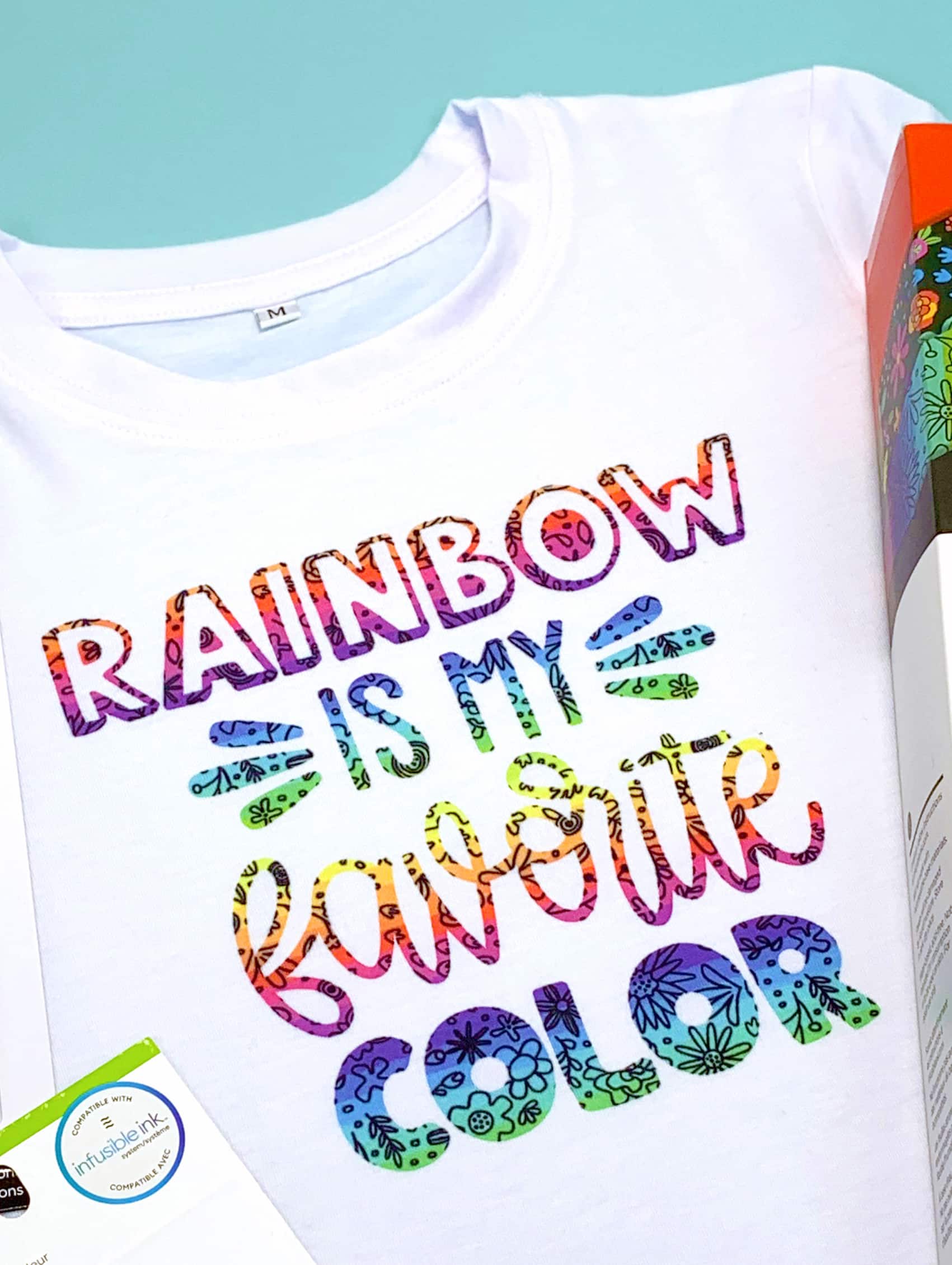
Vibrant and Long-Lasting Colors
One of the most significant benefits of sublimation printing is the ability to produce images with rich, vibrant colors that won’t fade or wash away over time. Since the ink actually bonds with the material, such as polyester fabric or specially coated ceramic mugs, rather than sitting on top of it, the colors are incredibly durable and can withstand repeated washing and exposure to sunlight without losing their vibrancy.
Versatility in Design & Applications
Sublimation printing allows for a HUGE range of design possibilities, making it perfect for both hobby crafters and professionals. With sublimation, you can create intricate, full-color images and patterns that are difficult or even impossible to achieve with other printing and crafting methods. It opens up a whole new world of creative possibilities! If you can print it, you can sublimate with it!
The collage of Nurse Sublimation Designs above is a great example of some of the designs that work extra well with sublimation printing. Those ultra-fine details and intricate patterns are not easily able to be replicated through other print methods (and certainly none that are so quick and easy as sublimation!)!
Plus, the sublimation process can be used on an incredibly wide variety of materials, from clothing and home décor to promotional products and personalized gifts, like ceramic coffee mugs and photo gifts. With sublimation printing, you can create one-of-a-kind items that are individually customized exactly the way you want them! (For all of those times that your name didn’t appear on items in the souvenir gift shop, now you can make your own!)
This versatile technique is a great way to create high-definition prints on a variety of substrates, such as polyester shirts (and poly-cotton shirts – more on that later!), cell phone cases, and even ceramic mugs. A lot of people are drawn to sublimation printing because of the unique chemical reaction that occurs during the process, resulting in permanent prints that are not only beautiful but also durable.
Moreover, the sublimation process results in better adherence of the ink to various materials compared to other printing techniques, such as heat transfer vinyl or water-based inks. This makes sublimation a popular option for many crafters and business owners alike.

Eco-Friendliness
Compared to other printing methods, sublimation printing is quite eco-friendly and sustainable! Sublimation ink is made from a combination of water and non-toxic heat-reactive dyes, so the process doesn’t require the use of any harsh chemicals, nor does it produce any harmful waste or create unhealthy work conditions.
The sublimation process itself requires no water, which is in stark contrast to other methods such as screen printing which uses a considerable amount of water, so it is more environmentally friendly in that regard as well. Plus, since sublimated designs last for such a long time, you won’t need to replace items as frequently, which can reduce even more waste in the long run!
What Supplies Do I Need for Sublimation Printing?
Ready to embark on your sublimation printing journey? Here’s a list of essential equipment and supplies to help you get started:
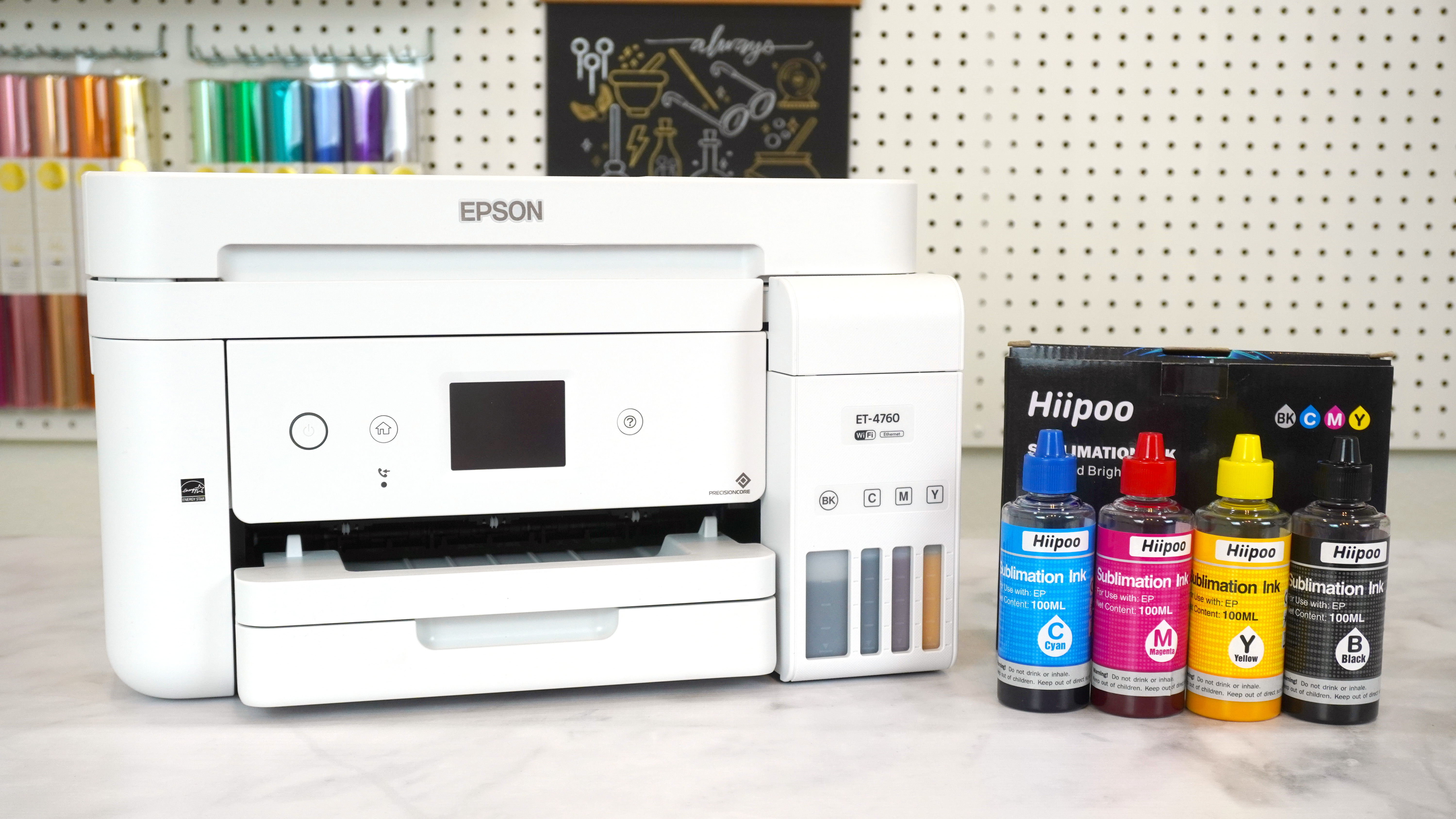
Sublimation Printer
A sublimation printer is specifically designed to work with specialty sublimation ink, ensuring that your designs come out looking the highest and most professional level of print color and quality. Some popular sublimation printers for beginners are the Sawgrass SG500 and Sawgrass SG1000.
Many standard inkjet printers can be converted to work with sublimation ink as well, though these printers can be a little more finicky to work with and may require some color adjustment via ICC profiles as well as frequent cleaning of the print heads. You can read all about How to Convert an EcoTank Printer for Sublimation here or check out the video here!
Using a printer designed specifically for sublimation printing, such as dye-sublimation printers, will ensure that your designs come out looking their best.
No Printer? No Problem!
Sublimation Ink
As I mentioned earlier, sublimation printing requires special sublimation ink, and you can NOT just use traditional printer ink for sublimation. Sublimation ink has the unique property of turning into a gas when heated, so ONLY ink that is labeled for sublimation printing will work. This ink is typically sold in cartridges or bottles, depending on the type of printer you choose to use. Be sure to purchase ink that is compatible with your printer and formulated specifically for sublimation printing.
I personally use Hiipoo Sublimation Ink in my Epson EcoTank ET-4760, and I love how bold and vivid the colors of my prints are!
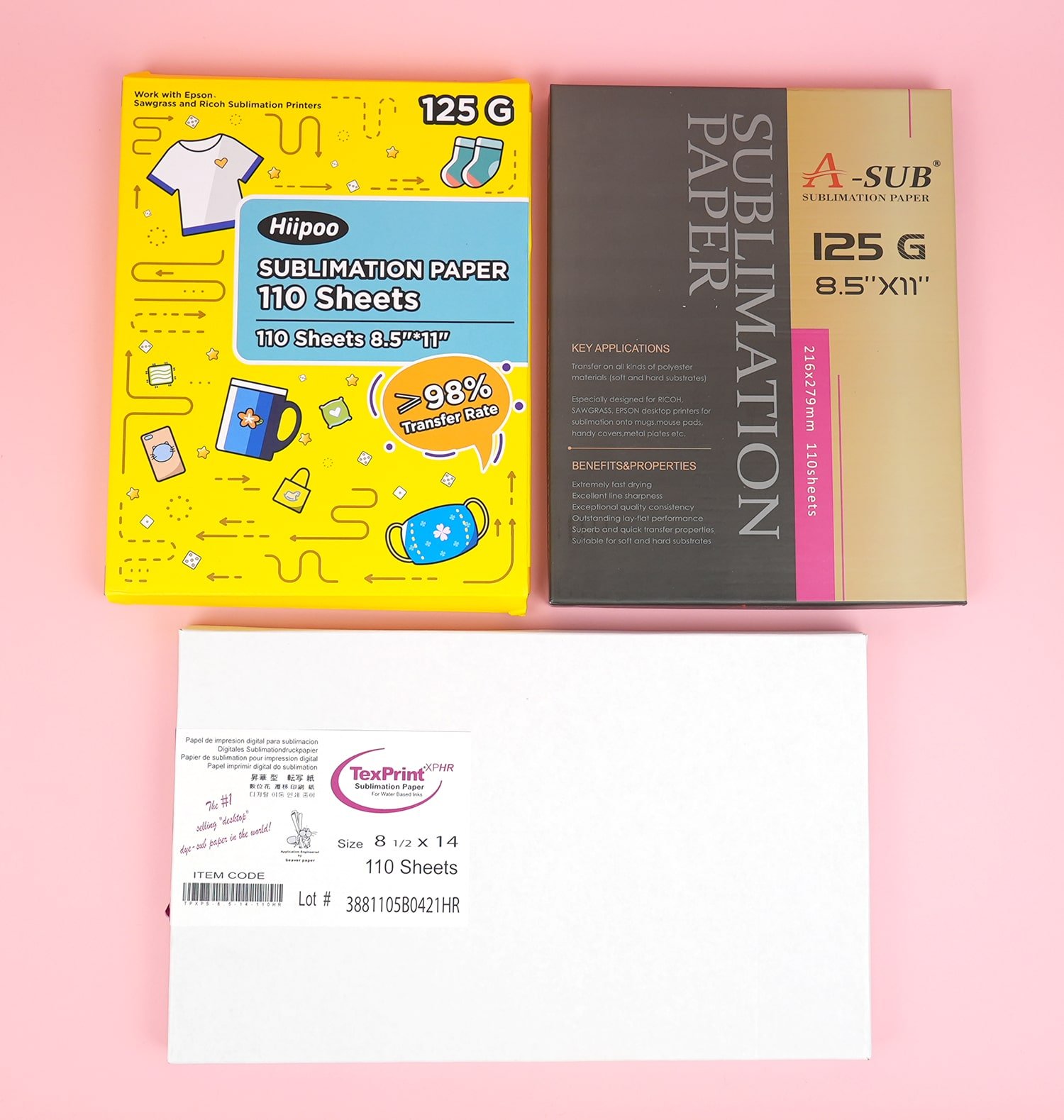
Sublimation Transfer Paper – Why Do I Need Special Paper?
What is sublimation transfer paper? Sublimation transfer paper is a special type of heat transfer paper that has been specifically designed to hold and release sublimation ink when heated. It’s important to use sublimation paper rather than traditional copy paper, because sublimation paper has a special coating that allows for the absorption and release of the ink as required.
Laser copy paper can be used in a pinch since it is made to withstand the high heat of thermal laser printers, but please note that the porosity of this paper makes it far more likely to bleed, resulting in lighter-colored transfers and fuzzy “ghosting” at the edges. Inkjet copy paper is NOT recommended as it is not designed to withstand the high heat necessary for sublimation transfer. For best results, always use specially designated sublimation transfer paper.
Some popular sublimation paper options are:
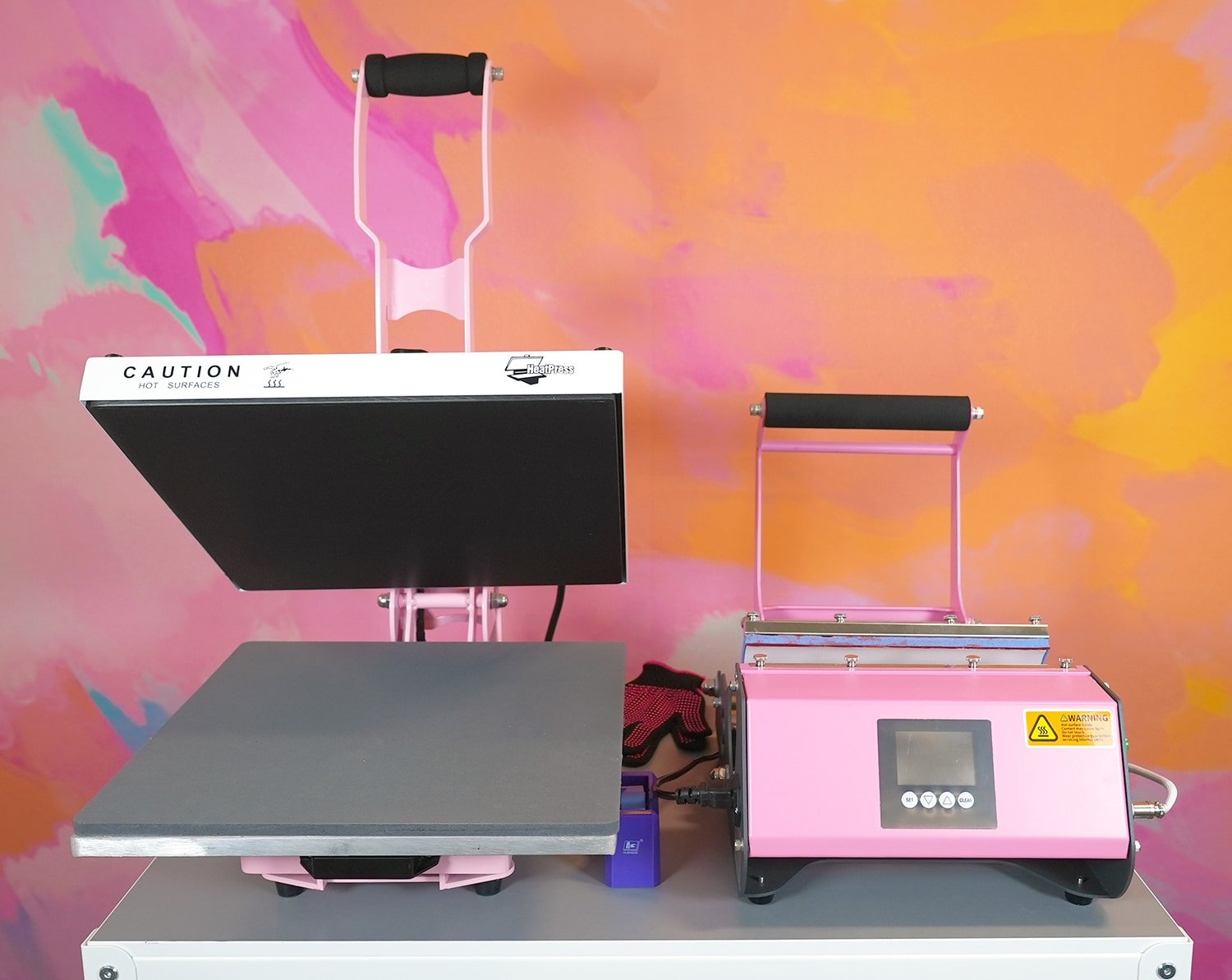
Heat Press Machine
To transfer your designs onto your chosen substrates, you’ll need a heat press machine. A heat press machine is required to apply high heat and pressure to the substrate and heat transfer paper, allowing the ink to convert into gas and bond with the material. Heat presses come in various sizes and styles, such as clamshell, swing-away, and drawer models, with each offering different benefits depending on your needs and workspace. Specialty heat presses like tumbler, mug, and hat presses are also available.
You may also use an automatic heat press such as the Cricut AutoPress or the HTVRONT Auto Press.
The Cricut EasyPress will also work for sublimation, though I do not recommend it as highly as a heat press since the EasyPress can shift and move around during the pressing process and result in “ghosting” or fuzzy transfers. A regular household iron is not recommended as it will typically not be able to produce enough heat or pressure for high-quality sublimation transfers.
Sublimation Blanks
The term “sublimation blanks” refers to the materials you’ll be transferring your sublimation designs onto. There’s a wide variety of sublimation blanks available, including t-shirts, mugs, tote bags, phone cases, keychains, and lots, LOTS more!
Keep in mind that for sublimation to work successfully, your blank must be made from polyester or coated in a polyester material, as this will allow the sublimation ink to properly bond with your substrate material during the chemical process.
The image above shows just a small selection of the MANY different sublimation blanks that are available in our Amazon Influencer Shop, so be sure to check them all out and get inspired!
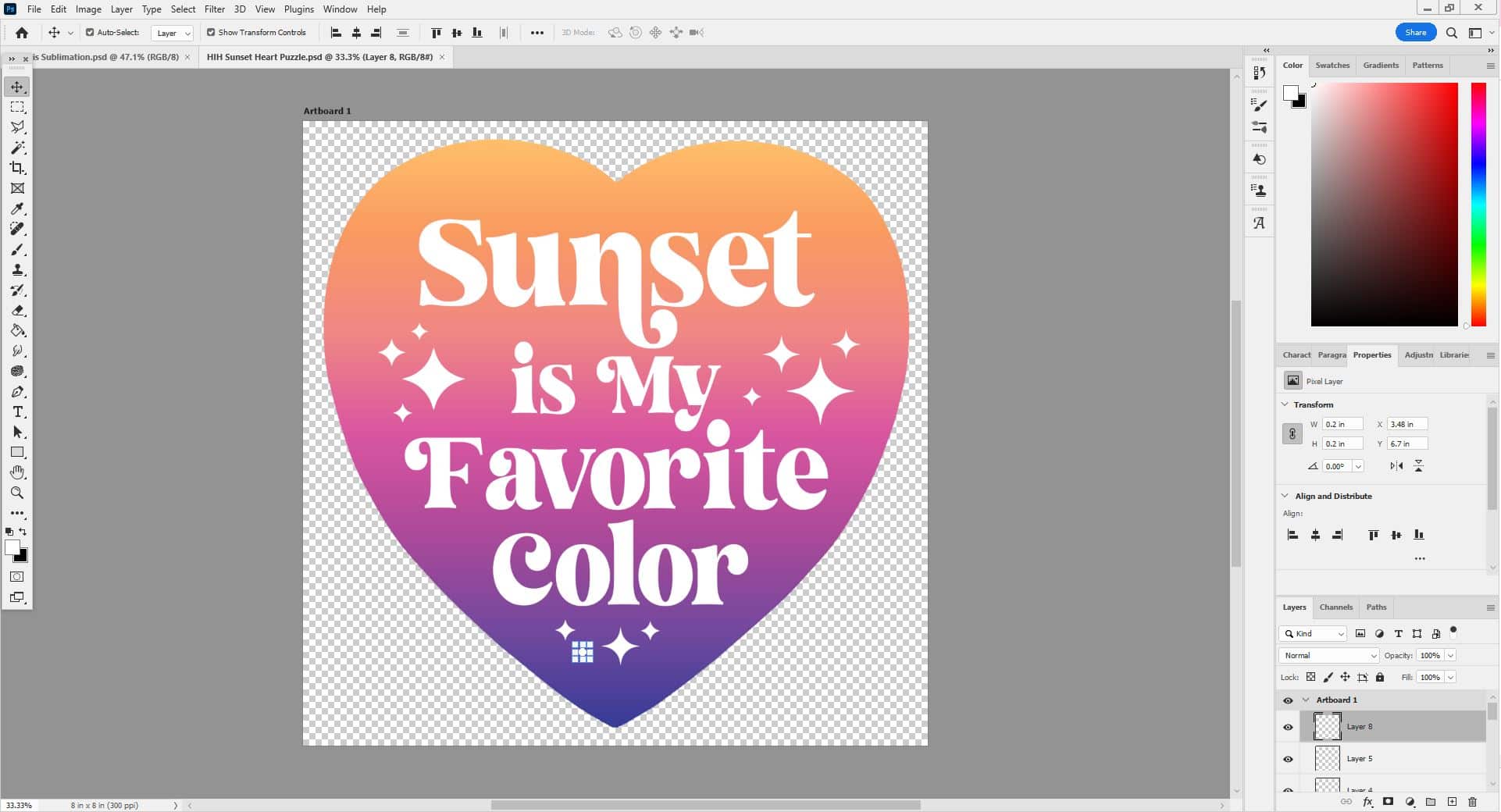
Design Software
To create your designs, you’ll need design software that allows you to edit and manipulate images. Some popular options include Adobe Photoshop and Illustrator, and CorelDRAW, but there are also many free or less expensive alternatives available such as Inkscape and Canva. The key is to find a program that you’re comfortable with and that meets your design needs.
With the right supplies and some practice, you can create your own projects using sublimation printing, whether it’s for personal use or to start a small crafting business.
Learning More About Sublimation Printing
We hope this introduction to sublimation printing has sparked your interest in this awesome craft technique and given you a solid understanding of what it entails. With its ability to create vibrant, long-lasting, and personalized items, it’s no wonder sublimation printing has become a popular choice for crafters and professionals alike!
In the next part of our beginner’s guide to sublimation printing, we’ll cover how to choose the right sublimation printer and ink, and we’ll walk you through the step-by-step process of sublimation printing. Stay tuned for a complete guide that will cover the basics of sublimation and help you determine if this exciting technique is right for you!

Check Out These Other Sublimation Ideas!
 HTVRONT Manual Heat Press Review & Setup
HTVRONT Manual Heat Press Review & Setup Taylor Swift Lyrics DTF Shirt Design
Taylor Swift Lyrics DTF Shirt Design HTVRONT Auto Tumbler Press Review
HTVRONT Auto Tumbler Press Review HTVRONT Auto Heat Press Review + Setup
HTVRONT Auto Heat Press Review + Setup The Best Shirts for Sublimation – That Aren’t 100% Polyester!
The Best Shirts for Sublimation – That Aren’t 100% Polyester! What is Sublimation Printing?
What is Sublimation Printing? Free Printable Sublimation Log & Notes Record
Free Printable Sublimation Log & Notes Record Infusible Ink Mugs with the Cricut Mug Press
Infusible Ink Mugs with the Cricut Mug Press

Heidi Kundin has captivated the hearts of millions with her colorful and inspiring approach to crafting, celebrations, and family fun. With over 15 years of experience, Happiness is Homemade has become a must-visit destination for those seeking quick and easy creative ideas and last-minute solutions. Heidi’s warm personality shines through her posts, inviting readers to join her on a creative journey that’s fun, rewarding, and achievable. Heidi is also the author of Homemade Bath Bombs & More and DIY Tie-Dye.

